Harvesting backyard zucchini can feel like a race against the clock, can’t it? One day you’ve got adorable little green fingers poking out from under the leaves, and the next, you’re staring down a baseball bat-sized behemoth! But don’t worry, I’m here to help you master the art of zucchini harvesting and avoid those monstrous marrows.
Zucchini, a type of summer squash, has a relatively recent history compared to other garden staples. Originating in the Americas, it wasn’t until Italian immigrants cultivated it in the 19th century that the zucchini we know and love today truly took shape. Now, it’s a garden favorite worldwide, prized for its versatility and prolific growth.
But that prolific growth is exactly why so many gardeners struggle! Knowing when and how to properly harvest your zucchini is crucial for maximizing your yield and enjoying the best flavor. Overgrown zucchini can become seedy and bland, while harvesting too early means missing out on its full potential. That’s why I’ve put together this guide filled with easy DIY tricks and hacks to ensure you’re harvesting backyard zucchini at its peak. I’ll share my secrets for identifying the perfect zucchini size, the best harvesting techniques, and even some creative ways to use your bounty. Get ready to become a zucchini-harvesting pro!
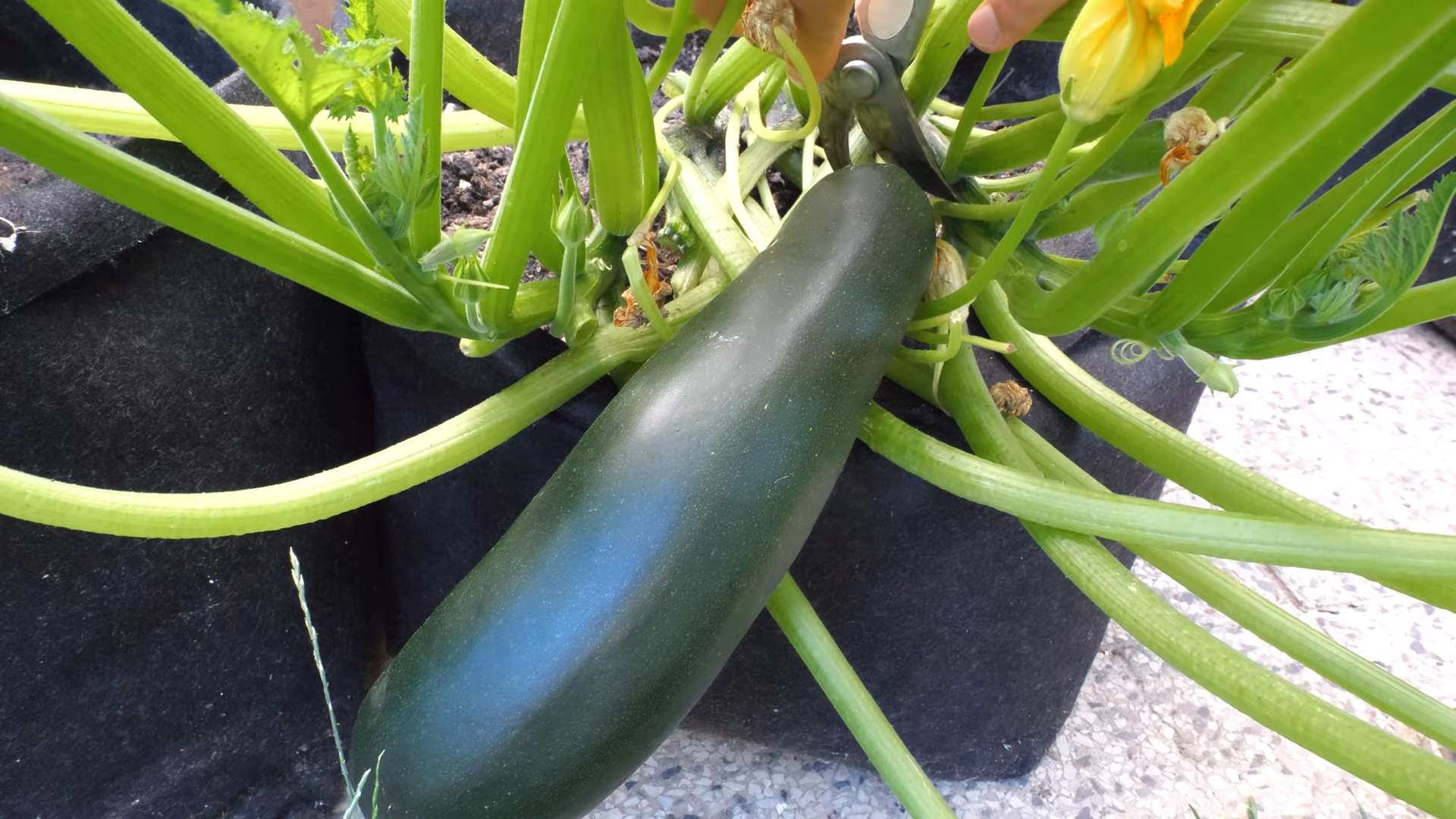
Harvesting Backyard Zucchini Like a Pro
Okay, zucchini season is upon us, and if you’re anything like me, your garden is probably overflowing with these green giants! Harvesting zucchini might seem straightforward, but there’s a bit of an art to it to ensure you get the best flavor and keep your plants producing all season long. So, let’s dive into my tried-and-true methods for harvesting backyard zucchini like a pro.
Choosing the Right Zucchini Size
First things first, size matters! While those enormous zucchini might seem impressive, they’re often less flavorful and can be a bit seedy. I’ve learned that smaller to medium-sized zucchini are the way to go.
* Ideal Size: Aim for zucchini that are 6-8 inches long. This is generally when they have the best flavor and texture.
* Too Big? Zucchini larger than 10 inches tend to be less tender and can have a bland taste. They also develop larger seeds, which I personally don’t enjoy as much.
* Too Small? While you *can* harvest zucchini when they’re smaller, you’ll get a better yield and more flavor if you let them grow to that 6-8 inch range.
Tools You’ll Need
Before you head out to the garden, gather your supplies. Having the right tools makes the job much easier and prevents damage to your plants.
* Sharp Knife or Pruning Shears: A sharp blade is essential for a clean cut. Dull blades can tear the plant and make it more susceptible to disease. I prefer pruning shears for their ease of use.
* Gloves: Zucchini plants can be a bit prickly, so gloves will protect your hands.
* Basket or Bag: You’ll need something to carry your harvest back to the kitchen.
* Optional: A small stool or kneeling pad if you have a lot of plants to harvest. My knees thank me every time!
Step-by-Step Harvesting Guide
Alright, let’s get down to the nitty-gritty. Here’s my step-by-step guide to harvesting zucchini:
1. Inspect Your Plants Regularly: I check my zucchini plants every day or two during peak season. Zucchini can grow incredibly fast, so you don’t want to miss the ideal harvesting window. Look for zucchini that are the right size (6-8 inches) and have a smooth, unblemished skin.
2. Locate the Zucchini: Zucchini often hide under the large leaves of the plant. Gently lift the leaves to find the zucchini you want to harvest. Be careful not to damage the plant or any developing zucchini.
3. Make the Cut: Using your sharp knife or pruning shears, cut the zucchini stem about 2 inches from the fruit. Make a clean, angled cut to prevent water from pooling on the cut surface, which can lead to rot.
* Important Tip: Always cut the stem, never pull or twist the zucchini off the plant. This can damage the plant and reduce future yields.
4. Handle with Care: Zucchini are delicate and can bruise easily. Gently place the harvested zucchini in your basket or bag. Avoid piling them on top of each other, as this can also cause bruising.
5. Repeat: Continue inspecting your plants and harvesting any zucchini that are ready. Remember to check under all the leaves!
Encouraging Continued Production
Harvesting zucchini regularly is key to keeping your plants producing. When you leave mature zucchini on the plant, it signals to the plant that it doesn’t need to produce any more fruit. By harvesting regularly, you encourage the plant to keep flowering and producing more zucchini.
* Regular Harvesting: Harvest zucchini every 2-3 days during peak season.
* Remove Overripe Zucchini: If you find any zucchini that have grown too large or are starting to rot, remove them from the plant. This will help prevent disease and encourage new growth.
* Watering and Fertilizing: Make sure your zucchini plants are getting enough water and fertilizer. Water deeply and regularly, especially during hot, dry weather. Fertilize with a balanced fertilizer every few weeks to provide the nutrients the plants need to produce fruit.
Dealing with Common Zucchini Problems
Even with the best care, zucchini plants can sometimes encounter problems. Here are a few common issues and how I deal with them:
* Powdery Mildew: This fungal disease can cause a white, powdery coating on the leaves. To prevent powdery mildew, make sure your plants have good air circulation and avoid watering the leaves. If you see signs of powdery mildew, you can treat it with a fungicide or a homemade solution of baking soda and water.
* Squash Vine Borers: These pests can bore into the stems of zucchini plants and kill them. To prevent squash vine borers, wrap the base of the stems with aluminum foil or netting. You can also look for signs of borers (small holes in the stems) and remove them manually.
* Blossom End Rot: This condition causes the end of the zucchini to rot. It’s usually caused by a calcium deficiency or inconsistent watering. To prevent blossom end rot, make sure your plants are getting enough calcium and water them regularly.
Storing Your Zucchini Harvest
Once you’ve harvested your zucchini, it’s important to store it properly to keep it fresh.
* Short-Term Storage: For short-term storage (a few days), store zucchini in the refrigerator in a plastic bag. Don’t wash it until you’re ready to use it.
* Long-Term Storage: For longer-term storage, you can freeze zucchini. To freeze zucchini, wash it, cut it into slices or cubes, and blanch it in boiling water for 2-3 minutes. Then, cool it in ice water and drain it well. Pack the zucchini into freezer bags or containers and freeze.
* Other Options: You can also pickle zucchini, make zucchini bread, or shred it and use it in soups and stews. The possibilities are endless!
Zucchini Recipe Ideas
Now that you have a basket full of zucchini, what are you going to do with it? Here are a few of my favorite zucchini recipes:
* Zucchini Bread: A classic for a reason! Zucchini bread is moist, delicious, and a great way to use up a lot of zucchini. There are tons of recipes online, so find one that suits your taste. I like to add chocolate chips to mine!
* Grilled Zucchini: Simple and delicious. Slice zucchini lengthwise, brush with olive oil, and grill until tender. Season with salt, pepper, and your favorite herbs.
* Zucchini Noodles (Zoodles): A healthy and low-carb alternative to pasta. Use a spiralizer to turn zucchini into noodles, then sauté them with your favorite sauce.
* Zucchini Fritters: Grate zucchini, mix with flour, eggs, and seasonings, and fry until golden brown. Serve with a dollop of sour cream or yogurt.
* Stuffed Zucchini: Hollow out zucchini and fill with a mixture of ground meat, rice, vegetables, and cheese. Bake until tender and bubbly.
Enjoying the Bounty
Harvesting zucchini from your backyard garden is a rewarding experience. Not only do you get to enjoy fresh, delicious vegetables, but you also get the satisfaction of knowing that you grew them yourself. So, get out there, harvest those zucchini, and start cooking! And don’t forget to share your bounty with friends and neighbors – they’ll thank you for it!
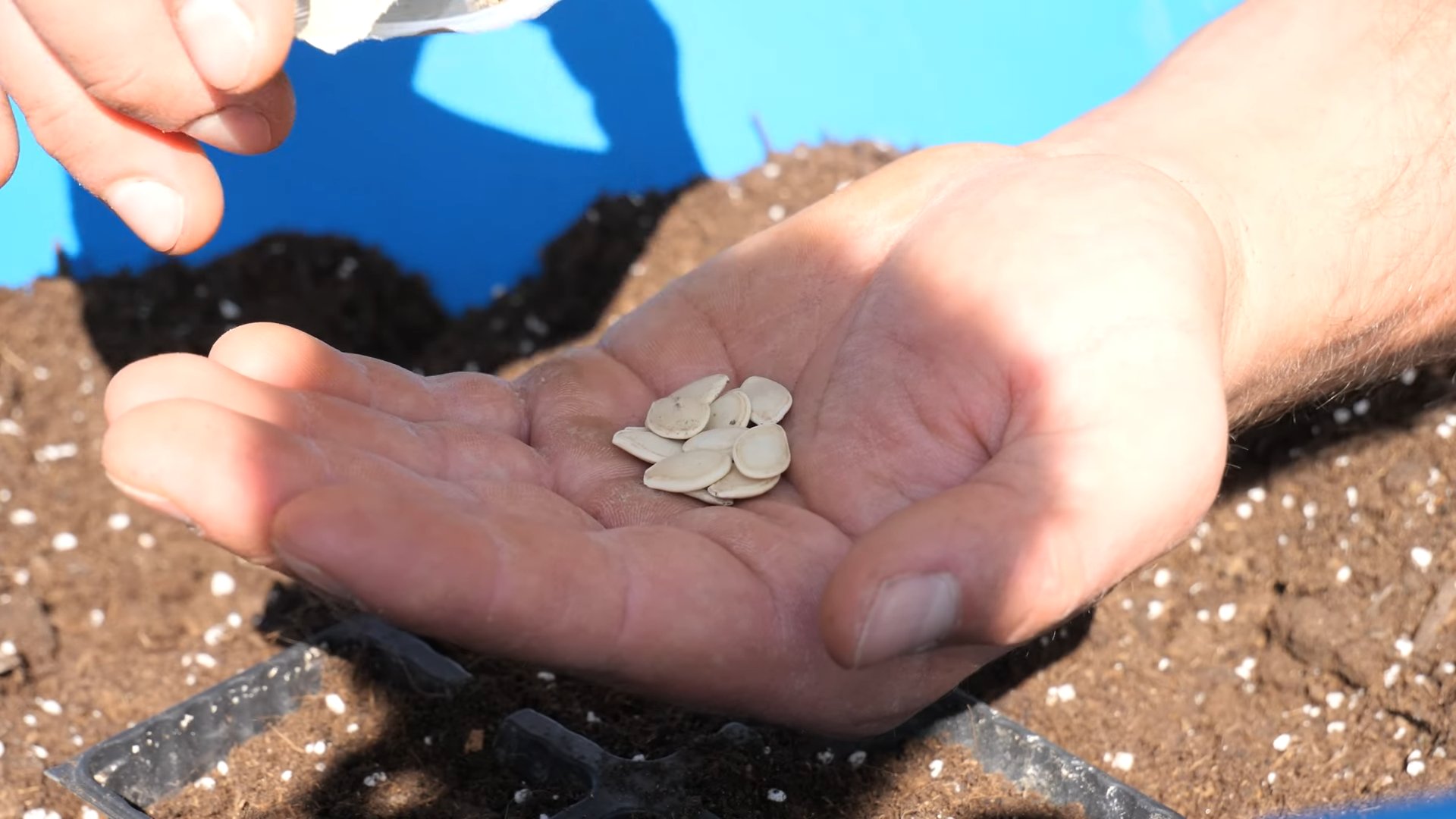
Conclusion
So, there you have it! Mastering the art of harvesting backyard zucchini isn’t just about plucking a vegetable; it’s about connecting with the earth, enjoying the fruits (or rather, vegetables) of your labor, and ensuring a continuous supply of fresh, delicious zucchini throughout the growing season. This DIY trick, focusing on proper timing and technique, is a game-changer for any home gardener, regardless of experience level.
Why is this a must-try? Because it prevents the dreaded zucchini glut! By harvesting regularly and at the optimal size, you encourage the plant to produce more, smaller, and more flavorful zucchini. Overgrown zucchini are often bland, seedy, and can actually inhibit further production. This method ensures you’re getting the best possible yield and quality from your zucchini plants.
But the fun doesn’t stop there! Feel free to experiment with different harvesting times to find what works best for your taste. Some prefer the smaller, more tender zucchini, while others enjoy the slightly larger ones for stuffing or shredding. You can also try different harvesting tools. While a sharp knife is generally recommended, some gardeners find pruning shears or even a sturdy pair of scissors to be more comfortable.
Consider these variations to elevate your zucchini harvesting and enjoyment:
* Zucchini Blossom Harvesting: Don’t forget about the blossoms! Harvest male blossoms (those without a tiny zucchini behind them) for frying or stuffing. This thins out the plant and encourages more zucchini production.
* Succession Planting: Plant zucchini seeds every few weeks to ensure a continuous harvest throughout the summer. This is especially helpful if you live in a region with a shorter growing season.
* Companion Planting: Plant zucchini alongside beneficial companion plants like marigolds, nasturtiums, or basil to deter pests and attract pollinators. This can lead to a healthier and more abundant zucchini harvest.
* Seed Saving: If you have a particularly productive or flavorful zucchini plant, consider saving the seeds for next year’s garden. Allow one zucchini to fully mature on the vine, then harvest the seeds and dry them thoroughly before storing them in a cool, dark place.
We wholeheartedly encourage you to try this DIY trick for harvesting backyard zucchini. It’s simple, effective, and will undoubtedly transform your zucchini growing experience. Imagine the possibilities: zucchini bread, zucchini noodles, grilled zucchini, stuffed zucchini blossoms – the culinary adventures are endless!
Don’t just take our word for it. Get out there, get your hands dirty, and experience the joy of harvesting your own backyard zucchini. And most importantly, share your experiences with us! We’d love to hear your tips, tricks, and favorite zucchini recipes. Let us know in the comments below how this method worked for you and any variations you tried. Happy harvesting!
Frequently Asked Questions (FAQ)
Q: How do I know when my zucchini is ready to harvest?
A: The ideal size for harvesting zucchini is typically when they are 6-8 inches long. At this size, they are tender, flavorful, and have fewer seeds. However, you can harvest them at smaller sizes (4-6 inches) for even more delicate flavor, or slightly larger (up to 10 inches) if you prefer. The key is to harvest regularly, as overgrown zucchini can become tough and seedy. Check your plants every day or two during peak growing season.
Q: What’s the best way to harvest zucchini without damaging the plant?
A: The best method is to use a sharp knife or pruning shears to cut the zucchini stem about 2 inches from the fruit. Avoid pulling or twisting the zucchini, as this can damage the plant and potentially introduce disease. A clean, angled cut will help the plant heal quickly.
Q: My zucchini plant is producing lots of flowers, but no zucchini. What’s going on?
A: This is a common problem, often due to poor pollination. Zucchini plants require pollination to produce fruit. Several factors can contribute to poor pollination, including a lack of pollinators (bees, butterflies, etc.), hot weather, or excessive watering. To improve pollination, you can try hand-pollinating the flowers. Use a small paintbrush to transfer pollen from the male flowers (those with a long, thin stem) to the female flowers (those with a small zucchini behind them). You can also attract more pollinators to your garden by planting flowers that they love, such as sunflowers, lavender, and zinnias.
Q: My zucchini leaves are turning yellow and wilting. What should I do?
A: Yellowing and wilting leaves can be a sign of several problems, including squash vine borers, powdery mildew, or nutrient deficiencies. Squash vine borers are a common pest that can tunnel into the stems of zucchini plants, causing them to wilt and die. Look for small holes in the stems and sawdust-like frass. If you find evidence of squash vine borers, you can try removing them manually or using an insecticide. Powdery mildew is a fungal disease that can cause white, powdery spots on the leaves. To prevent powdery mildew, ensure good air circulation around your plants and avoid overhead watering. You can also treat powdery mildew with a fungicide. Nutrient deficiencies can also cause yellowing leaves. Make sure your plants are getting enough nitrogen, phosphorus, and potassium. You can amend the soil with compost or fertilizer to provide these nutrients.
Q: Can I eat zucchini blossoms?
A: Absolutely! Zucchini blossoms are a delicious and versatile ingredient. They can be fried, stuffed, or added to soups and salads. Choose male blossoms (those without a tiny zucchini behind them) to avoid reducing your zucchini yield. Harvest the blossoms in the morning when they are fresh and open.
Q: How do I store harvested zucchini?
A: Store unwashed zucchini in the refrigerator in a plastic bag or container. They will typically last for about a week. For longer storage, you can freeze zucchini. Shred or slice the zucchini, blanch it in boiling water for a few minutes, then cool it in ice water. Drain well and freeze in freezer bags or containers.
Q: What are some creative ways to use my zucchini harvest?
A: The possibilities are endless! Beyond the classic zucchini bread, consider making zucchini noodles (zoodles) as a healthy alternative to pasta, grilling zucchini slices for a simple side dish, adding shredded zucchini to muffins or pancakes, or making zucchini fritters. You can also use zucchini in soups, stews, and stir-fries. Don’t forget about zucchini relish or pickles for a tangy treat.
Q: How often should I water my zucchini plants?
A: Zucchini plants need consistent moisture, especially during hot weather. Water deeply at the base of the plant, avoiding overhead watering, which can promote fungal diseases. Aim to water when the top inch of soil feels dry. A good rule of thumb is to water 1-2 inches per week, depending on the weather.
Q: What kind of fertilizer should I use for my zucchini plants?
A: Zucchini plants benefit from a balanced fertilizer with equal amounts of nitrogen, phosphorus, and potassium (e.g., 10-10-10). You can also use a fertilizer specifically formulated for vegetables. Apply fertilizer according to the package directions. Avoid over-fertilizing, as this can lead to excessive foliage growth and reduced fruit production.
Q: Can I grow zucchini in containers?
A: Yes, you can! Choose a large container (at least 24 inches in diameter) with good drainage. Use a high-quality potting mix and provide plenty of sunlight (at least 6-8 hours per day). Water regularly and fertilize as needed. Container-grown zucchini plants may require more frequent watering and fertilizing than those grown in the ground.

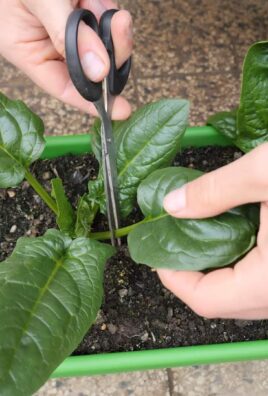
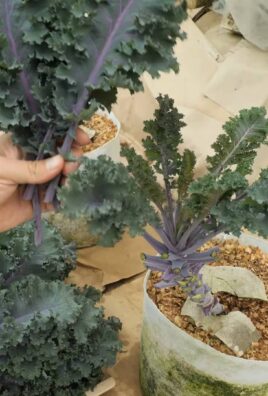
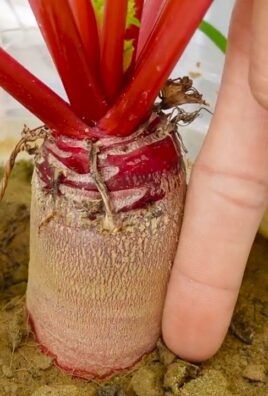
Leave a Comment